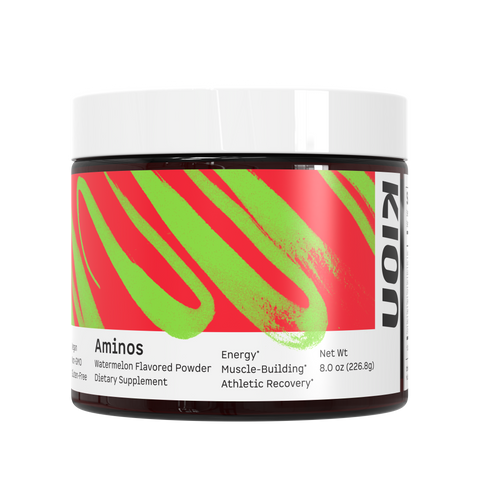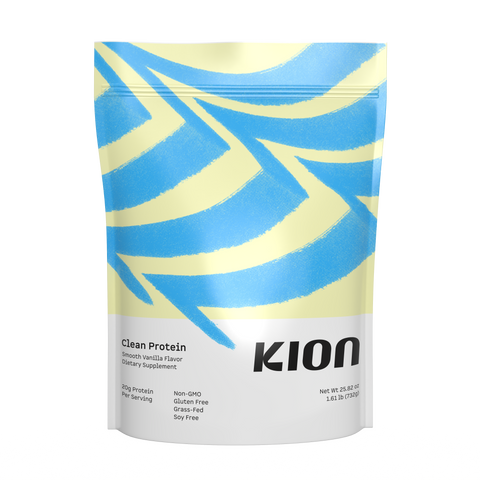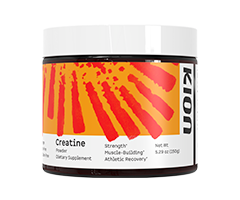When was the last time you did an intense, explosive workout, challenging your body to move as quickly as possible and requiring your undivided attention and focus?
If recently, you probably recall that it was hard. Much harder than usual.
Most people train within a comfort zone, with comfort being largely determined by what the nervous system is used to doing. Anything beginning to push beyond that familiarity will be met with resistance. And that's because you're asking your nervous system to fire more repeatedly and react faster than normal, causing unfamiliar discomfort for both your mind and body.
But if you want atypical results and far better performance, you need to change your routine, step out of your comfort zone, and add some focus to your workouts. Your brain wants to keep you safe, and that’s why you must consistently train your body to react to new stimuli and to make adaptations for better handling of that movement when it happens again. The fact is, your nervous system runs the show. And if you've overlooked the nervous system as a key component to training, then there's a ton of potential for reaching new levels of performance, whether you’re a weekend warrior or a professional athlete.
Sure, you can go into the gym to lift some heavy stuff and then walk out satisfied with the fact that you've worked your body and built a little bit of muscle, but if you want to do more with your body than just look good, you need to train two important attributes that go hand-in-hand with strength: power and speed. You need to optimize your brain-body coordination, recruit more muscle fibers, and enhance nerve firing speed by regularly doing fast, explosive movements.
The first step in incorporating speed and power into your training is understanding your nervous system.
The Nervous System's Role In Strength
A comprehensive discussion of the nervous and neuromuscular systems can get complex fairly quickly, but there are a few basics that will be helpful in understanding its crucial role. The nervous system functions as the mechanism that allows your mind and body to work as one cohesive unit. It receives input through the sensory nerves and coordinates action through motor nerves. The central nervous system, consisting of the brain and spinal cord, is connected to the muscles through the peripheral nervous system. The peripheral nervous system is divided into somatic (voluntary) and autonomic (involuntary or unconscious) components. The autonomic system is further broken down into sympathetic (think “fight or flight” responses) and parasympathetic (think “rest and digest”) systems. That all being said, for the sake of simplicity you can think of the nervous system as the “battery” that drives your muscles.
Training and developing robustness of the nervous system can be defined as “neural adaptation”. When looking at the nervous system as it relates to developing strength, two components that you should focus on are speed and power. While strength refers to how much force your muscles can exert, power refers to how quickly that force can be exerted. It’s the ability to generate large amounts of force over a short period of time. Speed is the ability to travel any set distance over a short period of time.
There are four key components for developing the nervous system and optimizing the neural adaptation process for developing strength, speed, and power. Incorporate any one of them into your training, or ideally combine the modalities, to greatly enhance your nervous system function, your athletic abilities, and your mind-body connection!
4 Ways To Optimize Neural Adaptation For Speed & Power
When it comes to optimizing your brain and nervous system, recruiting muscle fibers, enhancing nerve firing speed and optimizing brain-body coordination, it is important to focus on fast, explosive movements. Here you'll find the best training protocols for developing speed and power, as well as the importance of nutrition and recovery.
1. Challenge Your Mind & Body With Overspeed Training
In order to develop speed, you need to train for it. A large part of this is forcing the adaptation of your nervous system to levels just beyond its comfort zone. This means getting comfortable with being uncomfortable. A good rule of thumb is if you’re not forced to think hard during a speed workout, it probably isn’t challenging your nervous system. One way to do this is with overspeed training.
Overspeed training is, exactly as it sounds, the practice of training your limbs to turnover at a higher speed – a speed over what feels comfortable or natural. Through overspeed training, not only does your brain literally learn how to fire faster and control your muscles more efficiently at higher speeds, but you also develop more powerful and quick muscle fiber contractions, which comes in handy for hard surges during a race or tough workout. It’s something you can feel but might not be able to put into words. You can sense the brain trying to keep up and adapt to this new level.
This relates to training speed in any new skill. For example, if you’ve ever tried learning an instrument like guitar, you can feel your brain working hard to adapt as you play something slightly out of reach. Over time, with practice, this speed becomes the new normal.
There are some things to consider that will increase the effectiveness of speed practice:
- Speed training should be done only when your body is fully recovered. Your neuromuscular system is highly prone to fatigue and should be trained only once or twice a week. Avoid this type of overspeed work if your system has been exhausted by a hard endurance or strength workout. This is where you’ll see a lot of well-intentioned coaches make the mistake of adding this type of training at the end of a football or basketball practice when the body is tired. Instead, speed work should be done at the beginning of a workout, and can also act as a primer to the rest of practice. Consider training either in the morning when you’re fully recharged, or between 2 and 4 PM during your peak reaction time.
- Speed training requires only brief doses of low volume, high-output work. This means each session is very short, but very fast. It is not meant to be metabolic conditioning. If you're exhausting yourself metabolically, it becomes very difficult to train your nervous system. Think super short, super quick.
- Overspeed training is meant to challenge your nerves, not just your muscles. It’s supposed to quickly exhaust your brain while it sends messages to the muscles. Your brain needs a reason to adapt and make this a new normal. Otherwise, you’re not going to develop speed.
Here are some effective overspeed workouts you can easily do with equipment you probably already have, or at least relatively inexpensive training gear.
-Downhill overspeed running: Use a dry, non-bumpy grass area that allows you to sprint about 40-50 feet down a slope and then sprint another 40-50 feet once you reached the flat (to allow for the continuation of the overspeed effect without the assistance of gravity). Research indicates a downhill grade of about 5.0% is ideal, but don’t feel like you need to go to the golf course with surveying equipment to find the best slope. Just run down a relatively steep hill that isn’t so steep you fall over on your face.
-Overspeed cycling efforts: A downhill slope or an indoor trainer works best for these efforts, although you can get them done on the flats in a low gear, such as your small chainring. After a good warm-up, simply choose the lowest possible resistance that allows you to spin at an extremely fast rate without bouncing in the saddle. Spin at the fastest possible cadence (preferably higher than 120RPM) for a maximum of 30 seconds, and then give yourself full recovery before beginning the next set.
-Assisted swimming: For this workout, you will need swim stretch cords. In a pinch, you can use a good set of fins to allow yourself to swim faster, but you’ll get better results with less muscular and cardiovascular fatigue by using stretch cords. With the stretch cords attached to your waist, you simply swim as far away from the wall as possible, then turn and let the cords pull you back at a much faster pace than you’d be able to swim unassisted. If you do this correctly, you’re going to find your stroke turnover rate is incredibly difficult to maintain. You can insert this kind of overspeed training at the beginning or the end of one of your weekly swim sets.
As with all changes to your fitness program, be sure to progress slowly to avoid injury.
2. Training Strategies For Increasing Power
Power is the ability to generate high amounts of force over a short period of time. So while your strength refers to how much force your muscles can exert, your power refers to how quickly that force can be exerted.
When you train for power, your brain, spinal cord and entire central nervous system learn to control your muscles in a far more efficient way, creating enhanced muscle utilization without the negative effects of too much muscle bulk. It involves lifting light weights fast and moving quickly, increasing your ability to maximally utilize muscle without bulking you up. The advantage of being able to more effectively recruit the muscle you already have, without necessarily increasing muscle mass, is that you’ll need to recruit fewer muscle fibers for any given intensity. So power is like putting a faster engine in your car without increasing the size of the car or the weight of the engine itself. This results in lower energy costs, less muscular fatigue, and ultimately better performance in any movement.
There are three primary strategies for increasing power as fast as possible: plyometrics, speed-strength sets, and complex sets.
Plyometrics
In the simplest terms, plyometric training can be described as any activity that involves a rapid stretching of a muscle (eccentric phase) immediately followed by a rapid shortening of that muscle (concentric phase). Hopping, skipping, bounding, jumping and throwing are all examples of basic plyometric movements. Each of these movements relies upon the concept that when your muscle is rapidly stretched, elastic energy in the muscle’s tendon components is built up and briefly stored in those tendons, and when the muscle then contracts, the stored energy in that tendon is released, thus contributing to the speed of a movement or contraction.
Plyometric exercises promote high movement speed, lots of muscle fiber recruitment in a short period of time, and trained release of the powerful elastic energy stored in your tendons. This means that when your foot strikes the ground, it spends less time in contact with the ground, leaves the ground more quickly, and moves you along at a faster speed. When training with plyometrics (or any of the other power strategies you’re about to learn), the delay between the stretching, eccentric phase and the shortening, concentric phase needs to be very short, about no longer than a quarter second, and this is why all plyometric exercises need to be characterized by fast powerful movements
Here are some of the best plyometric movements you can use in your endurance training program:
-Depth jumps: Jump off a raised platform or box, land on both feet, and immediately jump as high as possible. For this and any other of the leg exercises in this article, you should minimize ground contact time.
-Single-leg hops: With one leg, hop up onto a slightly raised surface. Even jumping up onto a (non-moving) treadmill belt is fine.
-Bounds: Run, but with oversized strides and maximum amount of time spent in the air. Every time your foot strikes the ground, push off as hard as possible to maximize stride length.
-Clap push-ups: In a variation on the standard push-up, push up explosively, clap hands, and land. You can do these from your knees if necessary.
-Medicine ball throws: Take two to four steps and throw a medicine ball explosively from the chest as hard as possible toward a wall or training mat. Extend arms fully when throwing.
-Medicine ball slams: Hold a medicine ball overhead, then slam it into the ground as hard as possible. Catch and repeat. As a reverse alternative and similar exercise to medicine ball slams, you can do “muscle-ups” when in the pool, pulling yourself up and over the pool wall.
-Power skips: Perform playground-style skipping, with your knees exploding towards your chest as high as possible. As with bounds, your goal is to maximize time spent in the air and powerfully drive your knees towards your chest.
-Jump rope: Perform double or alternating leg rope jumping, with a focus on minimizing ground contact time and getting as many jumps as possible in the allotted period of time.
-Hurdle hops: This side-to-side movement is included because lateral motion is missing from most endurance training programs. Over a line, tennis ball can, cone or step bench, jump side to side as many times as possible in the allotted amount of time. You can jump with one leg (more advanced) or both legs.
Here’s how a sample plyometric routine looks, and during race season or the build-up to a race, you only need to do a program like this once per week to get results:
- Depth jumps – 10 jumps from 3- to 5-foot box
- Clap push-ups – 10
- Single leg hops – 10
- Med ball throws – 8
- Power skips – 20 yards
- Bounds – 40 yards
- Medicine ball slams – 8
- Hurdle hops – 10 per side
- Jump rope – 20 seconds
You can go through this entire routine two to three times as a circuit, and unlike most circuits, you’ll want full rest between any sets that use similar muscles (typically between 60 seconds and three minutes). For sets that don’t use similar muscles, such as depth jumps to push-ups, you don’t necessarily need to rest.
Speed-Strength
The only real difference between “strength” and “speed-strength” training is that for speed-strength, you perform the same multi-joint, full body lifts but you perform them quickly and explosively, often using lighter weights so that you can indeed move a weight as fast as possible. Compared to lifting weights at a slow and controlled speed, which maximizes strength, explosive training maximizes movement economy, motor unit recruitment, and even lactate threshold. This is the basis of Olympic weightlifting.
But you don’t have to know the snatch and the clean and jerk to get the benefits of speed-strength training. Other ballistic, explosive exercises that don’t involve quite as much coaching or as steep a learning curve, include:
- Dumbbell lunge jump
- Medicine ball throws
- Medicine ball slams
- Cannonballs
- Chest Throws
- Power Cleans
You should also check out this fantastic and free plyometric and power training library.
To get the most benefit out of your speed-strength sets, you should generally perform 3-5 sets of just 3-5 repetitions for each exercise that you do, using a weight that is 40-60% of your maximum weight, lifted at maximum speed. Take full recovery between speed-strength sets (2-5 minutes), and when necessary, you can also use “intra-rep” recovery, meaning you take 20-40 seconds between each repetition in a set. If you’re accustomed to high rep, medium weight, bodybuilding or Crossfit style weight training, this may seem much different than what you’re used to, but this is what it takes to maximize power production.
Complex Training
You may have already been aware of the benefits of plyometric exercises and explosive weightlifting just described. But it is slightly less well known that combining traditional strength and explosive exercises results in greater muscle fiber recruitment and even faster improvements in power and rate of force development.
“Complex Training” is exactly that: a workout comprised of a strength exercise followed by a plyometric or speed-strength exercise.
Examples of Complex Training include:
- Squats followed by squat jumps
- Lunges followed by lunge jumps
- Front squat followed by drop jumps
- Bench press followed by medicine ball chest throws
- Overhead press followed by overhead medicine ball throws
- Pull-ups followed by medicine ball slams
The science behind these matched pairs of exercises is that the strength set “primes” the central nervous system so that more muscle fibers are available for the subsequent explosive exercise. The difference between the type of strength sets that you perform in a Complex Training vs. a traditional strength set is that your repetitions are lower and heavier in a complex set.
For example, you go heavy on the first set, rest briefly, then progress to the next set, then finally, rest long.
For example:
- Front Squat, heavy x 3, rest 10 seconds, progress to Drop Jump x 6, rest 2-3 minutes
- Overhead Press, heavy x 3, rest 10 seconds, to Med Ball Throws x 6, rest 2-3 minutes
Just like power workouts, Complex Training should be used more than traditional strength training as you get closer to a race or competition.
Each of these strategies, along with tips for developing potent power no matter whether you’re in the gym, backyard, basement, park or hotel room, can be pursued using training tools for increasing power, including power racks, agility ladders, medicine balls, kettlebells, sandbags, adjustable plyometric boxes, weighted vests, training sleds and power cables.
3. Support Nervous System Function With Nutrition
As mentioned earlier, the nervous system receives input through the sensory nerves and coordinates action through motor nerves. Since the speed with which your nerves communicate will directly influence the speed of this process, there’s a great opportunity to introduce food-based compounds into your body that actually optimize nervous system function for speed. Your nerves are wrapped in myelin sheaths and a diet for power and speed should be composed of the specific nutrients that support the formation of these sheaths, as well as the health of the nervous system as a whole.
Two of the most important nutrients for supporting nervous system health are omega-3 fatty acids (especially docosahexaenoic acid, or DHA) and B complex vitamins. Flax seeds and walnuts are excellent sources of omega-3 fatty acids, but the amount of DHA actually absorbed from seeds and nuts is relatively low. Very good sources of more readily available omega-3 fatty acids include salmon, sardines, cloves, grass-fed beef, halibut, shrimp, cod, tuna, kale, collard greens, and winter squash, as well as algae-based derivatives like chlorella or spirulina.
From a vitamin B standpoint, good plant-based sources are simply dark leafy greens like kale, bok choy, or Swiss chard. Including those as staples in your diet is very good for the nervous system. Organ meats are another top source of B vitamins. Give liver a try with a little bit of egg (the yolk will provide more B vitamins) and coconut flour, fried up with some onions and bacon. Beans and lentils will also provide B vitamins.
4. Down-Regulation & Recovery
We've talked a lot about the overlooked importance of the nervous system as it relates specifically to speed and power. There's also much-untapped potential in learning about down-regulation of the nervous system and its recovery capacity because as mentioned above, the neuromuscular system is very prone to fatigue. Things like exercise intensity and frequency, nutrition, sleep quality, alcohol intake, and lifestyle stress all play a role in the rate of recovery. Keep in mind that In most cases, when your nervous system is drained from high-intensity efforts or too much stress, it needs 48 hours to fully recover.
So how do you know if you’re recovered and ready to go? There’s a simple phone app called the CNS tap test that simply has you tap the phone as many times as you can within a 20-second time frame, keeping track of how quick you’re tapping. And this is a really good reflection of your central nervous system strength. The CNS tap test is a simple way to quantitatively track the strength of your nervous system.
Paying attention to Heart Rate Variability (HRV) provides a more comprehensive indicator of your nervous system health, and based on your HRV numbers you’ll have a good idea whether you’re prepared for a difficult workout or need to take it easy. In a nutshell, HRV is the measurement of heart rate irregularity (yes, your heart beats at irregular intervals). A high HRV has been correlated to improved athletic performance and training adaptation and a low HRV indicates risk of overtraining and injury. You should measure your HRV first thing every morning using a wireless heart rate monitor like the Polar H7 and an HRV tracking app like the NatureBeat phone app.
Summary
Use of overspeed training, smart power development, nutritional support, and recovery all combine to support neural adaptation in strength development. Awareness and optimization of the nervous system will lead to massive gains in power and speed.
The next time you go to the gym or in your next workout, resist piling on the weights and instead move every rep at a lighter weight far more quickly and explosively. If you’d like to try this approach with cardio instead, see if you can run at a cadence of at least 90 steps per minute or cycle at a cadence of 120+ RPM with very short bouts of 20 to 60 seconds. See what it feels like to increase the cadence, train speed and to pay attention to that component of the nervous system that a lot of people neglect when they train.











